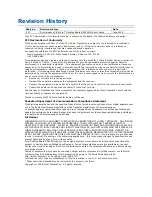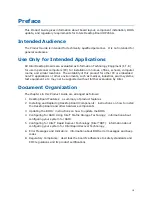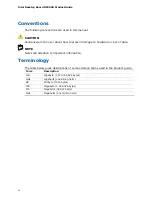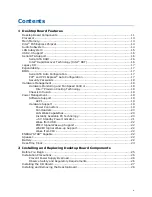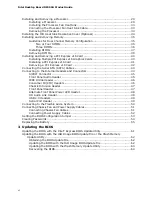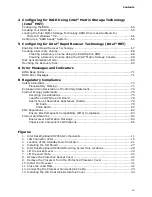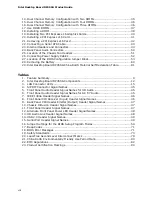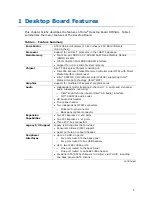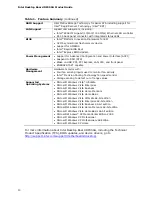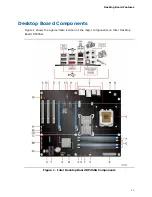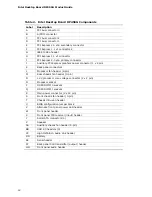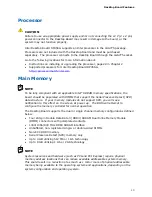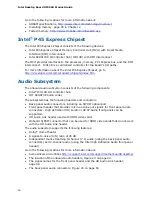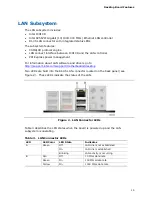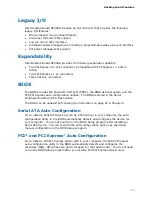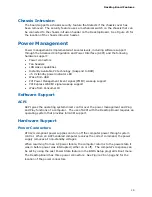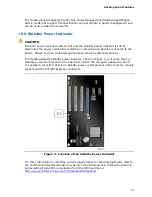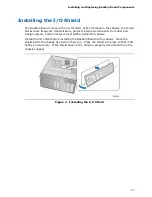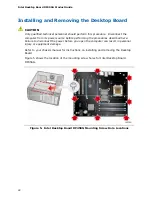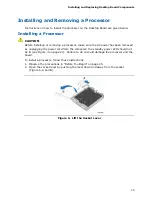
Intel Desktop Board DP45SG Product Guide
16
USB 2.0 Support
The Desktop Board supports up to 12 USB 2.0 ports (six ports routed to back panel
connectors and six ports routed to three onboard headers) via the ICH10R. USB 2.0
ports are backward compatible with USB 1.1 devices. USB 1.1 devices will function
normally at USB 1.1 speeds.
USB 2.0 support requires both an operating system and drivers that fully support
USB 2.0 transfer rates. Disabling Hi-Speed USB in the BIOS reverts all USB 2.0 ports
to USB 1.1 operation. This may be required to accommodate operating systems that
do not support USB 2.0.
Serial ATA Support
Intel Desktop Board DP45SG supports five onboard Serial ATA channels and one
eSATA channel (3.0 Gb/s) via ICH10R.
Serial ATA RAID
The five onboard Serial ATA channels support the following RAID (Redundant Array of
Independent Drives) levels via Intel Matrix Storage Technology:
•
RAID 0 - data striping
•
RAID 1 - data mirroring
•
RAID 0+1 (or RAID 10) - data striping and data mirroring
•
RAID 5 - distributed parity
For information on configuring your system for RAID using Intel Matrix Storage
Technology go to Chapter 4.
Intel
®
Rapid Recover Technology (Intel
®
RRT)
The Desktop Board supports Intel Rapid Recover Technology which enables fast and
easy recovery of your data in the event of a hard drive failure. It allows you to
maintain a complete copy of your primary or master drive onto a second hard drive,
the recovery drive. If the master hard drive should fail, either from a mechanical
failure or the result of a virus, recovery is as simple as booting from the recovery
drive. The recovery drive can be attached to your system via any standard SATA or
eSATA connection.
Intel Rapid Recover Technology also provides the added benefit of allowing the
recovery drive to be mounted as a read-only volume so you can quickly copy files from
the recovery drive when individual files need to be recovered.
For information on configuring your system for Intel Rapid Recover Technology see
Chapter 5.

